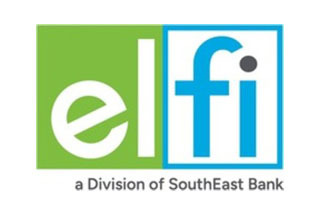New Federal Lending Rules Could Push Many Master's Degree Borrowers Into Private Student Debt

Many borrowers may be forced to turn to private lenders to pay for their education due to new limits on federal student loans.
Starting in 2026, President Donald Trump’s sweeping new domestic policy plan caps the amount of money graduate students can borrow from the federal government. For students in master's programs, it's $20,500 per academic year. That's a significant shift from current policy, which essentially allows for unlimited borrowing.
Since master’s degree programs are typically two years, these borrowers are practically cut off from federal loans at $41,000, says Jordan Matsudaira, an economics professor at American University and a former chief economist at the Department of Education.
On average, borrowers who completed their master's programs in 2020 took out nearly $54,000 (not including debt for undergraduate studies), according to the latest government data available — far more than the new limit would allow for over a two year period.
Matsudaira says to cover the funding gap in 2026 and beyond, many grad students would need to turn to private student lenders, which often have stricter lending terms, higher interest rates and fewer benefits than federal loans.
For instance, interest rates for graduate student loans from the federal government currently run between 8% and 9% and have lax credit requirements. And while lenders today are advertising private graduate loans with interest rates below 4% for borrowers (or a cosigner) with stellar credit, rates often run as high as 15%.
Why grad school borrowers could soon need private loans
In recent years, fewer than 5% of grad students borrowed from private lenders to pay for their tuition or room and board, according to Education Department data.
That number is about to jump.
Trump’s new budget package keeps the current $20,500 limit for unsubsidized Direct loans for master's programs, while completely eliminating the Graduate PLUS loan program, a key option for grad school funding that currently does not have explicit loan limits.
Using the latest data from 2020, Matsudaira’s analysis finds that 51.4% of master's degree borrowers would exceed the new lending limits, potentially pushing them to take out private student loans. Money independently verified this figure. But there are some caveats to it.
Adam Looney, economics fellow at Brookings and finance professor at the University of Utah, tells Money in an email that he has “a different interpretation of that fact.”
Just because a borrower exceeds the funding threshold, he says, doesn’t automatically mean they will switch to private student loans.
“Many may be capped out,” Looney says, “but will just say ‘I guess I’ll just borrow less or find another way to pay,’ rather than try to get a private loan, especially for relatively small amounts.”
To account for borrowers on the cusp, as Looney points out, Money separated them into groups based on how much they borrowed to better indicate their risk of needing a new funding source.
Within new lending limit (up to $41,000) | Low risk ($41,001-$45,000) | Medium risk ($45,001-$55,000) | High risk ($55,001-$65,000) | Very high risk (over $65,000) | |
|---|---|---|---|---|---|
Percentage of master's borrowers | 48.6% | 7.4% | 8.6% | 5.4% | 30% |
Our analysis suggests that about 49% of federal borrowers in master’s programs should stay comfortably within the new federal lending limits. On the other hand, just over 44% would be at medium to very high risk of needing private student loans, while just 7.4% could feasibly avoid them with frugality or other strategies to pay.
Notably, about 1 in 3 borrowers could be at “very high risk” because they borrowed over $65,000 from the federal government.
The other elephant in the room? Inflation. So far, these estimates use nominal borrowing amounts from 2020, which don't tell the full story. After all, borrowing $41,000 for a master's degree program in 2020 will look differently from borrowing that same amount in 2026, when the limit goes into effect.
Using growth rates of graduate program tuition dating back to 1990, Money projects that the average master’s degree will cost about $50,400 by 2026 (up from $39,600 in 2020). At many schools, tuition alone in 2026 will far exceed the new borrowing cap, and borrowers often rely on federal student loans for additional expenses, such as housing.
However, retroactively adjusting 2020 borrowing figures for inflation is tricky and largely illustrative. To get an upper-bound estimate of how many master's students may need to consider alternate funding sources in 2026, Money adjusted the $41,000 threshold for inflation using the cumulative annual growth rates of tuition over the past 30 years.
The inflation adjustment gives us this rough comparison: Borrowing $41,000 in 2026 would be comparable to borrowing about $30,100 in 2020. In this scenario, 66% of borrowers would be at some risk of exceeding the inflation-adjusted federal borrowing limit — potentially requiring private student loans, another funding source, or spreading out classes over three or four years to avoid hitting the annual borrowing limits.
Within inflation-adjusted lending limit (up to $30,100) | Low risk ($30,101-$35,000) | Medium risk ($35,001-$45,000) | High risk (45,001-$55,000) | Very high risk (over $55,000) | |
|---|---|---|---|---|---|
Percentage of master's borrowers | 33.9% | 6.3% | 15.8% | 8.6% | 35.4% |
Though this picture, too, is incomplete. That’s why Matsudaira tends to ignore inflation adjustments altogether. He says they could introduce more errors than just leaving inflation out of the equation in the first place. For instance, growing tuition and debt loads for grad school borrowers could be more a reflection of more students choosing more expensive schools, he notes, rather than the programs themselves actually getting more expensive.
Ultimately, all of these figures are preliminary estimates. We won't have data to see the actual effects until long after the new borrowing threshold takes effect, but it's safe to say that more students will have to consider private loans.
Some lenders are ready to pounce
Private student lenders appear eager to step in for the time being. Navient, which lends through its subsidiary Earnest, has been gearing up its grad school loans division. In its latest earnings call in April — just days after the House of Representatives proposed eliminating Grad PLUS loans — CEO David Yowan weighed in directly on offering private loans to borrowers who are no longer eligible for federal ones.
“We're confident if there is an [elimination] of the Grad PLUS program,” Yowan said, “that we can take our fair share of that if that opportunity presents itself.”
The same goes for SoFi, another major private student lender.
“If the government backs away from providing in-school loans, Grad PLUS, et cetera," said CEO Anthony Noto during an April earnings call, "we’d be very happy to step in."
But that's not to say private lenders would completely replace the loans the federal government was issuing. As Looney notes, even if students want private loans, that doesn't mean they're guaranteed them. Private lenders have far stricter lending standards than the federal government. That could mean many borrowers simply won't qualify.
"The [federal] programs affected by the loan limits are really, really expensive programs," Looney says, "often their students struggle to repay." And that could make banks reluctant to lend to grad students.
"When a student says to a bank: 'I’d like to borrow $180,000 to attend NYU’s Master's in Film and Visual Arts,' he says — noting that that's the actual average amount borrowed for the program — "the bank is going to say 'no.'"
More from Money:
Here Are the Best Colleges in America
Trump’s Big, Beautiful Bill Overhauls Student Loans and Monthly Payments. Here's How
Student Loan Interest to Resume Accruing for 8 Million Borrowers. Should You Switch Plans?






